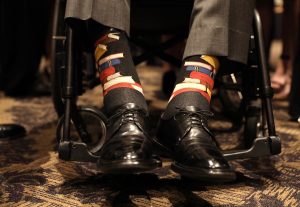TEHRAN — Across Iran’s heartland, from the sweltering heat of its southern cities to the bustling capital, protesters have taken to the streets with increasing intensity in recent months, much to the satisfaction of the Trump administration, which is hoping the civil unrest will put pressure on Iranian leaders.
Some demonstrations — about the weak economy, strict Islamic rules, water shortages, religious disputes, local grievances — have turned deadly. The protesters have shouted harsh slogans against clerical leaders and their policies. The events are broadly shared on social media and on the dozens of Persian language satellite channels beaming into the Islamic republic.
On Thursday, protests were held in the cities of Arak, Isfahan, Karaj and Shiraz, as people — in numbers ranging in the hundreds, perhaps more — took to the streets, chanting slogans like “death to high prices,” but also criticizing top officials. A smaller protest was held in Tehran, where some people were arrested, according to videos taken at the scene.
In the city of Eshtehard, west of the capital, protesters attacked a religious school on Thursday, forcing 500 clerics in training to flee, the semiofficial Tasnim news agency reported.
Truck drivers who went on strike in May for higher wages restarted their strike last week. The strike has affected fuel deliveries, leaving some gasoline stations empty in parts of the country, including Caspian Sea areas north of Tehran.
Iran’s currency, the rial, has lost nearly 80 percent of its value compared with a year ago, weakened at least in part because the Trump administration withdrew the United States from the nuclear agreement in May and restored American economic sanctions. The first batch of those restored sanctions is set to take effect on Monday.

President Hassan Rouhani of Iran, who supported the nuclear agreement, is under fire not only from hard-liners but also from the Iranians who voted for him — the vast middle class. Both groups say his economic policies have failed.
The demonstrations began after a week of unprecedented nationwide protests in January. In more than 80 cities, including Tehran, people took to the streets with economic demands and calls for more freedoms. In total, 25 people were killed and more than 4,000 were arrested.
The protests over the past six months have been relatively isolated, sporadic, scattered and much smaller than the antigovernment demonstrations in 2009, when millions took to the streets. But they reflect a common theme of rising dissatisfaction, many say.
Activists critical of the government concede the demonstrations do not threaten Iran’s leadership. Security forces, mindful of the 2009 upheavals, are now much better equipped to crush any organized antigovernment demonstrations. The protesters share neither unifying leadership nor clear agenda.
While many members of the large middle class are unhappy, they mostly watch from the sidelines, adverse to uncertainty.












